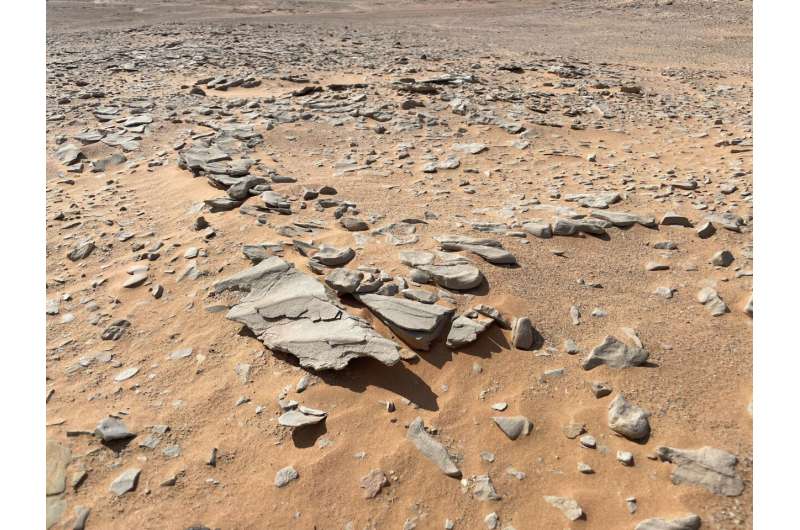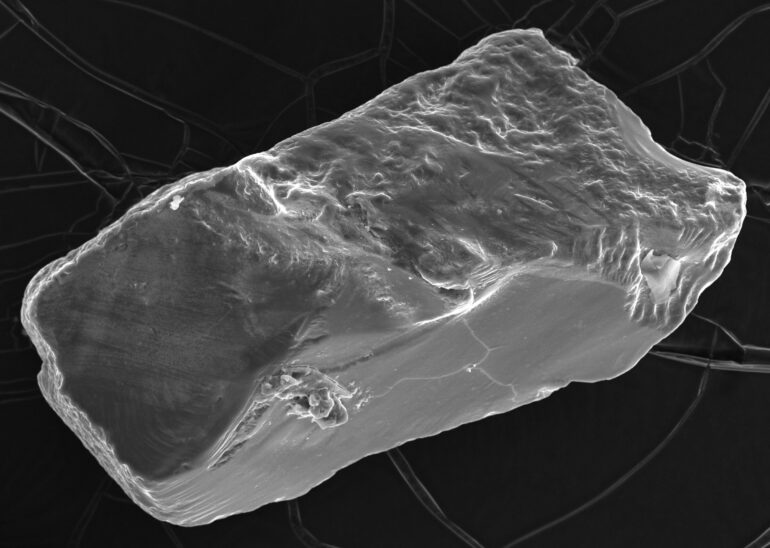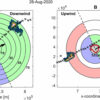Stanford researchers have developed an artificial intelligence-based tool—dubbed SandAI—that can reveal the history of quartz sand grains going back hundreds of millions of years. With SandAI, researchers can tell with high accuracy if wind, rivers, waves, or glacial movements shaped and deposited motes of sand.
The tool gives researchers a unique window into the past for geological and archaeological studies, especially for eras and environments where few other clues, such as fossils, are preserved through time. SandAI’s approach, called microtextural analysis, can also help with modern-day forensic investigations into illegal sand mining and related issues.
“Working on sedimentary deposits that haven’t been disturbed or deformed feels about as close as you can get to being in a time machine—you’re seeing exactly what was on the surface of Earth, even hundreds of millions of years ago. SandAI adds another layer of detail to the information we can pull from them,” said Michael Hasson, a Ph.D. candidate with Mathieu Lapôtre, an assistant professor of Earth and planetary sciences at the Stanford Doerr School of Sustainability.
Hasson is lead author of a new study demonstrating the tool, published in Proceedings of the National Academy of Sciences.
Telltale signatures
Historically, microtextural analysis has been done by hand and eye, using magnifying glasses and microscopes to attempt to draw inferences about sand grains’ histories.
Modern science has validated the approach, showing that transport mechanisms do indeed impart telltale signatures—for example, grains that traveled farther often appear more rounded because they’ve had their sharp corners dulled; waves and wind also leave distinctive abrasion patterns.
However, traditional microtextural analysis is highly subjective, time-consuming, and scattershot across different studies. Thanks to the new tool, which leverages the power of machine learning to deeply scrutinize microscopic images of sand grains, microtextural analysis can now be far more quantitative, objective, and potentially useful across a wide range of applications. It also analyzes individual sand grains instead of lumping multiple grains into a single category, offering a more complete evaluation.
“Instead of a human going through and deciding what one texture is versus another for sand grains, we are using machine learning to make microtextural analysis more objective and rigorous,” said Lapôtre, who is senior author of the paper. “Our tool is opening doors for microtextural analysis applications that were not available before.”
Worldwide, sand is the most used resource, after water, and is critical in the construction industry. Materials such as concrete, mortar, and some plasters require angular sand for proper adhesion and stability. Gauging the origins of sand, however, to ensure ethical and legal sourcing is challenging, so the researchers hope SandAI can bolster traceability. For example, SandAI could help forensics investigators crack down on illegal sand mining and dredging.
Training the tool
To build SandAI, the researchers employed a neural network that “learns” in a manner akin to the human brain, where correct answers strengthen connections between artificial neurons, or nodes, in the program, enabling the computer to learn from its mistakes.

The SandAI neural network was trained using modern quartz sand and can help unravel the histories encoded in ancient rocks. Shown here are ancient ripples formed by water currents being reworked by modern wind-blown sediment in Oman. © Mathieu Lapôtre/Stanford University
With help from collaborators around the world, Hasson assembled hundreds of scanning electron microscope images of sand grains, representing material from the most common terrestrial environments: fluvial (rivers and streams), eolian (windblown sediments, such as sand dunes), glacial, and beach.
“We wanted this method to work across geological time, but also across all of the geography that we have on Earth,” said Hasson. “So, for example, the windblown dunes class was designed to include examples that are wet and dry, large and small. We needed the classes to be as diverse as they possibly could be.”
SandAI analyzed this set of images to train itself to predict the sand grains’ histories based on features that human researchers might not ever discern. The tool naturally made errors and would then iteratively improve. Once SandAI reached a robust 90% prediction accuracy, the researchers introduced new samples the model had not previously seen.
With images of sandstones from well-characterized environments ranging from the current day back to roughly 200 million years into the Jurassic era, SandAI performed well, correctly elucidating the grains’ transport histories.
Novel science and applications
Next, the researchers challenged the tool with images of sand grains collected from Norway that date back more than 600 million years to the Cryogenian period. Better known as the time of “Snowball Earth,” this was when ice sheets are thought to have covered the whole planet, before plants and animals had evolved. The origin of the sample in question, called the Bråvika Member, has been contested, with various research groups coming to different conclusions.
“With this Cryogenian sample, we were seeing how far we can push SandAI and really using it to do new science rather than just verifying that the tool worked,” Hasson said.
Intriguingly, SandAI surmised that the ancient sand grains had been shaped and deposited as part of a windblown sand dune—in agreement with some manual microtextural studies. Moreover, because the tool analyzes individual sand grains, versus lumping multiple grains into a single category, other details emerged.
While the dominant signature indeed indicated wind transport, a secondary signature that manual techniques would likely miss pointed to glacial sand. Together, those signals paint a portrait of sand dunes running somewhere near a glacier, as might well be expected during the Snowball Earth period.
To evaluate those findings further, Hasson and colleagues looked for a potential modern analog of this Cryogenian geological scene. The researchers ran windblown sand grains from Antarctica through SandAI and, sure enough, arrived at the same result.
“These findings from SandAI suggest that Antarctica really is a good modern analog to the environment represented by the Bråvika Member,” Hasson said. “They are a really strong piece of evidence that the signal we got from the Cryogenian deposits isn’t just a fluke.”
The researchers have made SandAI available online for anyone to use. They plan to continue developing it based on user feedback and look forward to seeing the tool applied in a range of contexts.
“The fact that we can now offer detailed conclusions about geological deposits that weren’t knowable before I find kind of mind-blowing,” said Hasson. “We’re looking forward to seeing what else SandAI can do.”
More information:
Michael Hasson et al, Automated determination of transport and depositional environments in sand and sandstones, Proceedings of the National Academy of Sciences (2024). DOI: 10.1073/pnas.2407655121
Provided by
Stanford University
Citation:
An AI tool for scanning sand grains opens windows into recent time and the deep past (2024, September 16)



